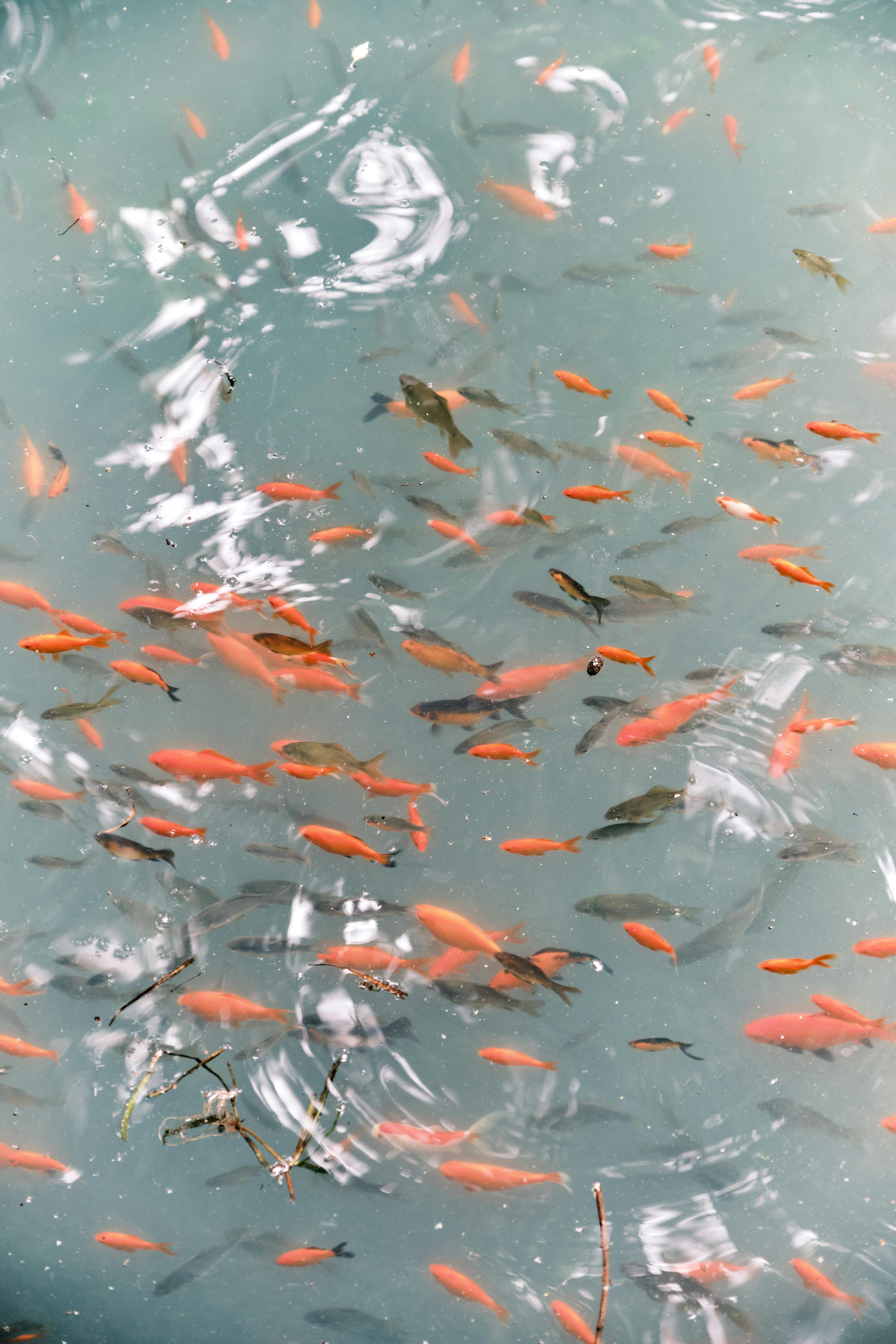
Smart Ways to Optimize Large Fish Tanks for Better Living
Creating and maintaining a large fish tank can transform any living space into a mesmerizing aquatic landscape. Whether you prefer freshwater aquariums or the vibrant ecosystem of saltwater tanks, understanding the essentials of fish tank optimization is crucial for both aesthetic appeal and fish health. This guide to optimizing big fish tanks will provide insights into proper tank size selection, filtration systems, lighting options, and more.
Benefits of optimizing your aquarium include improved fish well-being, better water quality, and enhanced visual appeal. By choosing the right fish species and ensuring appropriate tank conditions, you'll lay the groundwork for a flourishing underwater ecosystem.
This article will cover crucial topics including fish tank filtration, heating, aquatic plants, and fish compatibility, presenting a comprehensive roadmap to help you create a thriving aquatic environment. Get ready to dive into the essential methodologies for successful aquarium ownership!
Key Takeaways: By the end of this guide, you will have practical tips for aquarium setup, maintenance considerations, and insights into the latest trends in fish tanks.
Essential Guide to Fish Tank Filtration Systems
With a vast array of fish tank filtration options available, transitioning from basic to efficient systems is key to maintaining a healthy aquatic environment. Building on the fundamentals of filtration will ensure your fish tank remains clean and your fish thrive.
Understanding Filtration Types
When it comes to keeping your aquarium clean, understanding the different types of filtration is essential. The three primary forms are mechanical, biological, and chemical filtration. Mechanical filtration filters out particulate matter, biological filtration utilizes beneficial bacteria to break down toxins, and chemical filtration removes impurities from the water.
Your choice should align with your tank's size and fish species. For example, larger tanks may require more robust systems, while smaller aquariums could be maintained effectively with basic filters. Often, a combination of these filtration types will provide the best results.
Choosing the Right Filtration System
Different tank setups, such as tropical fish tanks or marine fish tanks, may require specific filtration systems. When selecting a system, consider the size of your tank, the number of fish, and the specific needs of your aquatic animals. Research available options, such as canister filters or under gravel systems, to enhance your fish tank's filtration effectively.
Additionally, ensure that the filter's flow rate is suitable for your aquarium, as too much turbulence can stress your fish.
Common Mistakes in Filtration
Many aquarists fail to realize the importance of regular filter maintenance. Not cleaning or replacing filter media as needed can lead to excess waste buildup and deteriorating water quality, ultimately harming fish health. It's essential to follow a structured maintenance schedule for the best outcome.
Furthermore, underestimating the load your filtration system can handle is another common pitfall. Always choose a filtration system designed to accommodate the specific needs of your tank, ensuring a harmonious aquatic community.
Optimal Tank Size Selection for Your Aquarium
Choosing the right tank size is pivotal for creating a healthy environment for your fish. Once you’ve grasped the fundamentals of filtration, it is time to explore how tank size influences fish health and compatibility, leading to an optimal aquarium experience.
Factors to Consider When Choosing Tank Size
When selecting a tank, consider the type of fish you'll be keeping and the space you have available. Larger fish require larger tanks, while small species can thrive in more compact spaces. For example, if you're interested in exotic fish tanks, you may need to accommodate specific temperature and water quality requirements.
Additionally, think about the long-term commitment of owning fish. As fish grow, they may need more space, which can prompt the need for upgrading your tank over time.
Common Sizes and Shapes
Aquariums come in various shapes and sizes—from standard rectangular tanks to unique custom fish tanks. Each configuration has its benefits; for instance, tall tanks can enhance the visual appeal of plants, while longer tanks can provide more swimming space for active fish. It’s best to research which aquarium dimensions suit your fish species and layout preferences.
Additionally, consider the flow of water and light distribution within your tank when selecting its shape.
Maximizing Tank Size for Fish Compatibility
Many fish breeds have specific space requirements and temperaments, affecting compatibility. The larger the tank, the more fish species can coexist peacefully. For instance, community tanks work best in spacious environments where fish can establish territories without conflict.
Regularly assessing fish compatibility and tank size is crucial to maintaining harmonious relationships within your aquatic ecosystem. A well-planned tank will lead to vibrant fish health and reduced stress levels.
Effective Ways to Maintain Fish Tank Water Quality
After establishing the right filtration and tank size, focusing on maintaining optimal water quality is essential. Quality water not only contributes to fish health but also plays a vital role in the overall ecosystem. Understanding parameters like pH levels, ammonia, nitrates, and nitrites is paramount.
Key Water Parameters for Fish Tanks
Monitoring water parameters is a fundamental aspect of fish tank care. Regularly test for ammonia, nitrate, and nitrite levels to ensure they remain within established safety standards specific to your chosen fish species. This monitoring vastly improves your chances of keeping vibrant and healthy fish, making it crucial for dedicated aquarists.
Regular Water Changes
Incorporating routine water changes into your aquarium maintenance schedule is imperative for promoting a healthy aquatic environment. Aim to change 10-15% of the tank water weekly, adjusting this percentage based on your tank size and the number of fish present.
When performing water changes, ensure that you have dechlorinated water ready, as adding untreated tap water can be harmful to fish.
Fish Tank Testing Kits
Investing in an aquarium testing kit can help you monitor water quality effectively. These kits allow you to track levels of pH, ammonia, nitrites, and nitrates, serving as a proactive measure for any potential water quality issues. Failure to test regularly can devolve into problems that harm fish health.
Being diligent with water quality management can significantly enhance the longevity of your fish and the success of your aquarium hobby.
Choosing the Right Aquarium Lights for Optimal Tank Health
The right lighting can make all the difference in an aquarium's aesthetic appeal and the health of its inhabitants. As you progress through optimizing fish tank mechanisms, understanding aquarium lighting will enhance your environment both visually and biologically.
Types of Aquarium Lighting Options
Aquarium lighting options can significantly impact plant growth, fish behavior, and algae production. Depending on your aquarium type, consider LED lights for their energy efficiency and ability to promote plant growth. Additionally, they produce less heat, reducing the need for supplemental cooling in more delicate environments such as saltwater tanks.
Lighting Duration and Schedule
Establishing a proper lighting schedule is crucial for maintaining a healthy aquatic ecosystem. Aim for 10-12 hours of light each day to promote natural behaviors in your fish while allowing for downtime in darker conditions. Automated timers can help manage cycles, yet regular observation is essential for adjusting as needed.
Avoiding Common Lighting Mistakes
Overexposure to intense lighting can lead to algae overgrowth—an issue that every aquarist should address early on. Monitor your aquarium regularly, observing fish behavior and water clarity to identify any negative effects from lighting.
Additionally, ensure that your chosen lights are suitable for the specific plants and fish within your aquarium, creating an environment conducive to blooms and cooperation.
Q&A Section: Fish Tank Care and Troubleshooting
1. How often should I change the water in my fish tank?
As a general guideline, aim to replace 10-15% of the water weekly, adjusting based on tank size and fish population. Regular changes dramatically influence water quality.
2. What is the best filter system for my aquarium?
The best filtration system depends on your tank type. Canister filters are popular for their efficiency in larger tanks, while hang-on-back options work well for smaller freshwater setups. Assess your needs and fish species when selecting a filter.
3. How do I know if my fish are happy?
Signs of happy fish include vibrant colors, active swimming, and natural behaviors such as foraging and hiding. Alternatively, signs of stress could indicate a need for water condition evaluation or tank compatibility reassessment.
4. What are the best plants for a fish tank?
Popular options for aquatic plants include Anubias, Java Fern, and Amazon Sword. These plants can enhance the look of your tank while providing necessary cover for fish.
5. How can I control algae in my aquarium?
Controlling algae can be managed through regular water changes, optimizing lighting, and incorporating algae-eating fish or invertebrates. Regular maintenance techniques and chemical algae control can also support these efforts.

 Its part of generated content. Can i generate another part?
Its part of generated content. Can i generate another part?